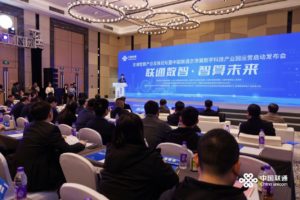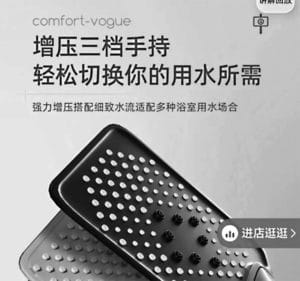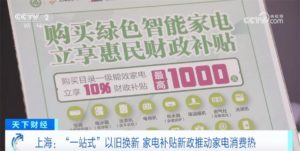Samples of smart clothes drying racks such as Panpan, Haodaitai, and Oaks are not up to standard

[ad_1]
Figure 1: The press conference site.
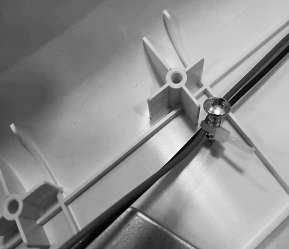
Figure 2: The internal wiring project is not up to standard.
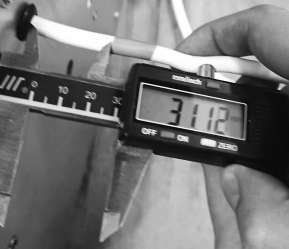
Figure 3: The power connection and external cord items are not up to standard.
As an emerging household appliance product, smart clothes drying racks are favored by the public. However, there are also problems such as uneven product quality, merchants exaggerating product performance, and design defects. On April 2, the Jiangsu Provincial Consumer Rights Protection Committee released a comparative test analysis report on smart clothes drying rack products. Samples with brands such as “NetEase Select”, “Oveco”, “Panpan” Oujia” and other brands did not meet the standards.
This comparative test is based on the detection methods and limit requirements in GB 4706.1-2005 “Safety of Household and Similar Electrical Appliances Part 1: General Requirements” and QB/T 5202-2017 “Household and Similar Electric Clothes Drying Machines”. Products are evaluated in terms of electrical safety and performance. The results showed that 17 of the 25 smart clothes drying rack samples did not meet the standards, accounting for 68%. Among them, 10 models did not meet relevant standards for electrical safety; 17 models did not meet relevant standards for performance; 10 models did not meet relevant standards for electrical safety and performance, accounting for 40%. There are another 8 samples that fully meet the electrical safety and performance requirements, including samples with nominal brands such as “Op,” Mijia, “Bull,” Totle, and “Meiling.”
10 samples including Panpan and Higo have potential safety hazards
The evaluation results show that 10 samples have electrical safety problems, mainly reflected in input power and current items, structural items, internal wiring items, power connection and external soft wire items, grounding measures, screws and connection items, etc.
Among them, the input power and current items of the sample with the nominal brand name “Panpan” do not meet the standards. The actual input power deviates greatly from the nominal rated power on the nameplate. The measured input power value is much higher than the rated value, which is easy to cause damage during use. Risk of overloading.
The internal wiring project of the sample with the nominal brand name “Higold” does not meet the standards. The internal wiring is not only in contact with sharp threads, but is even directly fixed tightly to the threads with ties. After extrusion and friction, once the insulation layer is Destruction can easily cause a short circuit and ignite surrounding plastic parts, thereby causing greater danger.
Sample screws and connection items with the nominal brand name “Oveco” did not meet the standards. The ground terminal and the metal shell are only connected by simple bolts and nuts, and no anti-loosening measures such as spring washers and toothed washers are taken. In daily use, it is easy to cause the ground bolt to loosen and fall off, and there is a lack of ground protection measures. It may cause electric shock hazard to the user and damage life.
The nominal brands are “NetEase Selected”, “Oveko”, “Jingui Madam”, “Working to Working”, “Oujia”, “Yuanshu”, “Higao”, “Haoshandian” and “Handing” and other 9 sample structures. The grounding measures of 6 samples with nominal brands such as “Oveco”, “Working to Working”, “Panpan”, “Oujia”, “Yuanshu” and “Haoshandian” are not up to standard. There are two main problems with grounding measures: First, the problem of grounding reliability, which is manifested in the lack of clamping and anti-loosening measures for the ground terminal. Daily use can easily cause the grounding bolt to loosen and fall off, which will cause the user an electric shock hazard and injure his life. . Second, the reserved length of the grounding wire is insufficient, which can easily cause the risk of electric shock and is a major safety hazard.
Regarding the power connection and external soft cord items, there are three samples that do not meet the standards. They are the samples with the nominal brands of “Oujia” Yuanshu” and “Haoshandian”. For example, the power cord passes through the opening on the metal plate. The holes are not protected by any sheaths, casings and other measures. Friction will produce a cutting effect. It is easy to cut the insulation layer and touch the core of the wire to cause a short circuit. The outer shell may be electrified, or it may easily cause a fire. .
The performance of 6 samples including Oaks and Oveco did not meet the standard.
In addition to safety factors, performance is also the focus of consumers’ attention, especially the load-bearing issues of smart clothes drying racks and whether they can operate smoothly. The results showed that the rated load-bearing items of 6 samples with nominal brands such as “Oakes”, “Oveco”, “Jingui Madam”, “Working to Working”, “Oujia” and “Yuanshu” did not meet the standards. When the rated weight load stated in these samples is evenly hung, the appliance cannot be raised normally and cannot be used normally.
For consumers, when purchasing, they refer to the manual to select a product that meets their own needs. However, they cannot lift some heavier clothes and bedding during later use, which greatly reduces the practicality of the product and is also a kind of deception to consumers. The 13 samples with nominal brands such as “NetEase Selected”, “Ox” and “NVC” did not meet the requirements. Among them, 6 samples encountered obstacles during operation and could not stop; 2 samples fell too fast during operation and exceeded the limit range; 7 products could not rise or fall normally after a single-sided load was attached, or even cause damage.
There are deviations in the size of 6 samples with nominal brands such as “NetEase Selected”, “Oakes”, “NVC”, “Oveco”, “Supor” and “Wrigley”, and the actual size of the main unit or drying pole deviates too much from the stated size. , which may result in failure to install; the travel range of the sample with the nominal brand name “NVC” is not up to standard. The intuitive feeling of consumers is that the height of the drying pole is not low enough, which will be more difficult for some short or heavy clothes to dry. ; Among the 10 testable samples, the overload items of two samples with the nominal brands of “Higold” and “Haotai” did not meet the standard requirements. (The pictures in this article are all data pictures)
●Consumption tips
Check the product label carefully
The Jiangsu Provincial Consumer Protection Commission reminds consumers to pay attention to the following when purchasing and using smart clothes drying racks:
Choose brand-name products produced by well-known companies. The products of these companies are of good quality and have reliable maintenance services. Since smart clothes drying rack products are not yet included in the national compulsory certification product catalog (CCC certification), consumers can choose products with China Quality Certification Center certification (CQC certification) on the nameplate logo when purchasing. Product identification should be complete, including company name, address, specifications, models, trademarks, voltage parameters, power parameters, symbols of power supply properties, etc. There should be warnings to prevent misuse, and detailed cleaning methods should be included on the product. The operating switch markings should be clear and reliably fixed. When buying a smart clothes drying rack, you need to shop around, make a comprehensive comparison, and try to choose products with high praise rates and good reputation. If there are exhibits, you can carefully observe the details, or you can actually operate them to see the actual performance of the product.
Pay attention to the maximum load capacity of the smart clothes drying rack when using it, and do not overload it. For smart clothes drying racks with warm air drying and ultraviolet sterilization functions, the warm air drying and ultraviolet sterilization functions must be turned on when the clothes drying rod is raised to the top to prevent accidental harm to surrounding people.
[ad_2]
Source link



